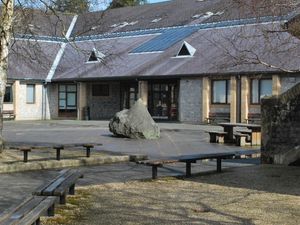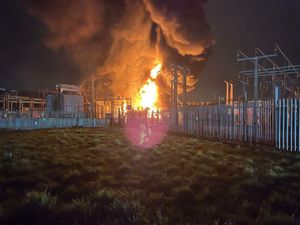Boundary changes: Shock for Montgomeryshire MP Glyn Davies
Glyn Davies has experienced most things in politics – but the demise of his constituency is a new one on him.

Before the announcement, Mr Davies admitted he was "not optimistic" that his seat would survive the cull.
And sure enough the Montgomeryshire seat, held by Glyn Davies since 2010 is among the high-profile casualties of a constituency shake-up.
The shake-up will see the north of the Montgomeryshire constituency, including Welshpool, merged with Clwyd South to form a new South Clwyd and North Montgomeryshire constituency.
The south of the county, including Newtown, will become part of the Brecon and Radnor seat, which will be renamed Brecon, Radnor and Montgomery.
The Ludlow seat, held by Philip Dunne since 2005, is set to merge with the northern part of Bill Wiggin's North Herefordshire seat to create a new Ludlow & Leominster constituency.
The Boundary Commission's report said while this would be a geographically large constituency, there two towns benefited from strong road links.
Bridgnorth, Much Wenlock and Broseley will no longer come under Ludlow, but will be moved into a new seat for Bridgnorth, Wellington and The Wrekin.
Chirbury and Worthen, which at the moment come under Ludlow, will become part of a renamed Shrewsbury constituency, which will drop its reference to the village of Atcham.
Montgomeryshire MP Mr Davies said he was greatly saddened by the loss of his seat, which he said would be bad for democracy in the area.
He said it was far from certain whether the changes would go ahead, as they were still subject to consultation. But he said if they were ratified, he thought it unlikely he would be looking to stand in a new seat.
"I have been involved in public life for more than 40 years, and that has always been in Montgomeryshire," he said.
Mr Davies, 72, said anything that split his constituency in two would be a cause for regret, although he could understand the thinking behind the review.
"The reality is that Wales has been over-represented now for decades, particularly as there is a Welsh parliament as well," he said.
"I can't argue with the driving force behind the changes that are being made, but from a personal point of view it will be bad for the area where I live.
"Anything that would split the constituency down the middle, leaving parts of it on the periphery of two constituencies to the north and the south, would be regrettable."
The number of MPs will be cut from 533 to 501 in England, from 59 to 53 in Scotland, from 40 to 29 in Wales, and from 18 to 17 in Northern Ireland.
If approved, the changes will be implemented for the General Election due in 2020. However, they will now go out to public consultation and before a final set of proposals go before Parliament in October 2018.
The reductions in England and Wales are expected to have a greater effect in Labour-dominated areas than Conservative ones.
Wales will be the hardest hit, losing more than a quarter of its MPs, while the West Midlands will lose six MPs, down from 59 to 53.
By contrast, eastern England will be left with 57 MPs, down by just one, and the East Midlands will lose just two, being left with 44.
The north-east will be hard hit, losing four of the 29 MPs it has got at the moment, while the north-west will be down by seven seats, from 75 to 68, and London will be down by five from 73 to 68.
Of the five regions where the Conservatives took the most MPs at the last General Election, only the West Midlands will see its representation fall by more than two MPs.
However, experts say it will not be possible to accurately gauge the impact of the changes until 2018, when the final boundaries are published.
A consortium of the print and broadcast media has commissioned Professors Colin Rallings and Michael Thrasher of Plymouth University to calculate a set of detailed "official" notional results showing how the new parliamentary constituencies might have behaved if they had been in place at the 2015 general election.
These calculations, which can only be completed once the final proposals are known, will form the baseline for reporting 2020 general election results and statistics.
Periodic boundary reviews are considered necessary to try to minimise variations in the size of constituency electorates, and the present review has been set a target that most seats should generally have between 71,000 and 78,500 constituents, with exceptions for some of the more remote areas.
The previous review of constituency boundaries, which would have brought in a similar reduction in the total number of MPs, was blocked in Parliament by the Liberal Democrats in 2013 following a row with their Conservative coalition partners. As a result, the 2015 general election was fought on the same boundaries as those in 2010.
The current review uses the electorate figures from December 2015. This has drawn criticism as it excludes significant increases in voter registration seen in the run-up to the EU referendum on June 23.
The commissions insist they have no discretion to use more recent electorate data, although Tom Hartley, secretary of the England Boundary Commission, has said any evidence of an increase in electorate in a particular area will be taken into account, without going outside the allowed variation.





